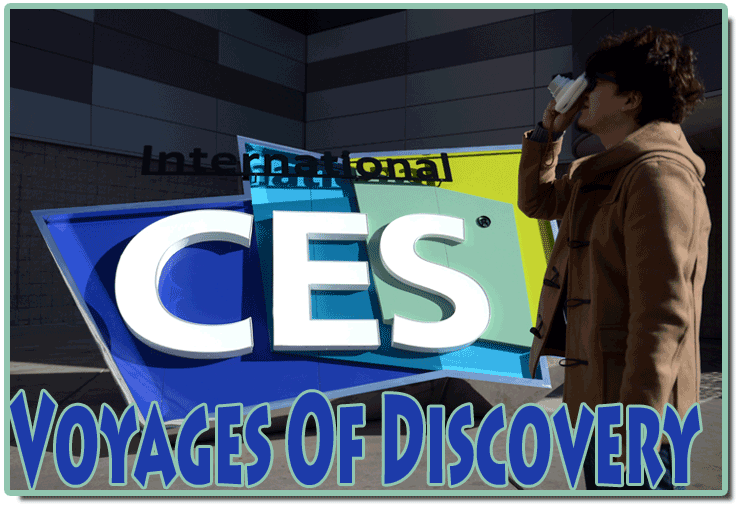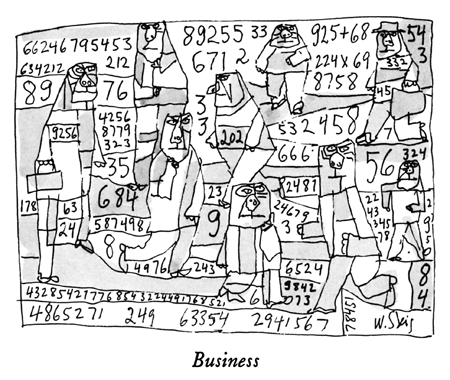
You cannot
help it. You work in, or are connected by air cargo to, the airline
business.
For many people, airlines depart from
the familiar to explore places yet to be discovered.
A new year affords a wonderful opportunity
to consider why and how to spend the coming year.
Today we are talking about industry trade
shows with an interview with the U.S.-based Air Forwarders Association.
We’ve been thinking a lot about
it.
After you run the gamut of two or three
air cargo trade shows, around about May, the most oft-heard rationale
for appearing at industry events is that they “are good for networking.”
Granted, networking is important, but
after a couple of times you cannot help but wonder if it’s the
drinking time or if there is really anything more to say to the “usual
suspects”?
We suspected the truth could be found
in a mix of both, and have embarked on checking out some new options
for trade show attendance that might bring new opportunities to air
cargo.
Last week was the blockbuster Consumer
Electronics Show (CES) held in Las Vegas.
We’ve just passed through the twinkling,
always lovely, and sentimental holiday season, so having the Consumer
Electronics Show in a place where the night is brighter than the day
is a power surge for the senses, and quite a propos.
The fact that so many commodities partially
or entirely shipped by air cargo are in attendance makes CES an important,
albeit overlooked, event for air cargo people ready to explore what
could be a goldmine of future business.
Consumer Electronics Show 2015 (CES),
held January 6-9, was resplendent with high tech, air cargo-dependent
consumer goods. Despite being held in the glittering fantasia of Las
Vegas, Nevada, the majority of CES attendees originated from overseas,
with big players Samsung, Sony, LG, and HTC leading the ranks. Air cargo
should open their ears and eyes to the products promised at CES 2015—including
where they will be produced and where they will be in demand—as
these details directly relate to the future success of the air cargo
industry.
We recently wrote about Airbus’
3-D printed jumbo jet, and it seems 3-D printing will be expanding beyond
plastics. At CES 2015 the company Makerbot introduced new plastic filaments
containing wood, metal, and stone pieces, which will herald new opportunities
for makers and artists of all stripes to enlarge the world of 3-D printing.
Voxel8, a new 3-D printer, takes the technology one step further by
introducing the ability to print complete tech objects (as opposed to
singular components that have to be pieced together). Voxel8 can essentially
print the plastic body and metal circuitry of a drone, with all the
wiring already printed inside.
 As I sit typing this, looking at plastic
I’ve wrapped over a leaky AC unit that breathes bitterly cold
air into my office, I long for Keen Home’s new smart vents, which
fit over the vents in your home and “smartly” open and close
to modulate the temperature in your home.
As I sit typing this, looking at plastic
I’ve wrapped over a leaky AC unit that breathes bitterly cold
air into my office, I long for Keen Home’s new smart vents, which
fit over the vents in your home and “smartly” open and close
to modulate the temperature in your home.
But these are just some of the “small
beans” products—niche technologies that added a little color
to the event. The big dogs, the sharp-edged tech introductions that
will be slicing through the tech world to serve up a brand new future,
should really be on air cargo’s radar.
Samsung held back on unveiling its Galaxy
S6 phone, opting instead to reveal its SUHD television. From plastic
printing to next gen TVs, 3-D knows no bounds in 2015. Not only will
Samsung’s SUHD TV offer no-glasses-required 3-D, but it also boasts
a 110-inch LCD screen with 8K resolution (forget 4K, which is only just
now becoming affordable)—that’s about 16 million pixels,
which is hard to even imagine. We can’t guarantee the whole thing
won’t make you feel like you’re living in the movie Gravity,
nauseous and a little punch-drunk, but hey, if Sandy Bullock can make
it out alive, then maybe so can we. The problem will really lie in the
availability of 8K-compatible programming. At the moment, with 4K only
now becoming available and even remotely affordable, the question becomes
whether 8K products will even be usable before the end of this decade.
LG, Sharp, and Panasonic also introduced 8K prototypes, but only Panasonic
addressed the issue of 4K programming with the introduction of a 2015
4K Blue-Ray player, which will be great if you can find a 4K Blue-Ray
disc (you can’t). 4K was still a big player at CES 2015, and as
it becomes more affordable, will become a tech innovation to pay special
attention to as the next generation television system.
Sony revealed its new “Walkman”
portable music player, which I grew instantly excited about, thinking
I could revive my dusty cassette mixtapes with a swanky new personal
player system. Alas, Sony’s new Walkman is, like its Apple iPod
contemporary, a digital music system—but better. The new Sony
Walkman plays uncompressed, high-res audio files that supposedly surpass
your average MP3 or CD. Bulkier and heavier than an iPod, the new Walkman
is composed of aluminum alloy and sports a faux-leather back. But unlike
the $20 Walkman I bought in 1988, the new Sony Walkman boasts a $1,200
pricetag, so unless you’re an avid audiophile, it might not be
worth it.
New smartphones from the big cell phone
companies were conspicuously absent at CES 2015. While HTC introduced
its Desire 826 and 320, it was companies like ASUS with its uber-affordable
Zenfone 2 ($199) and Zenfone Zoom, Motorola-owner Lenovo with its A6000,
and YEZZ with its Firefox OS-dependent phones that showed their wares,
to name a few.
The biggest thing to come out of CES 2015
was probably the myriad drone iterations. More than 100 different drones
were present at the show, confirming that drones are one of the most
rapidly growing consumer technologies of late. Drones have become so
popular and ubiquitous among techies that they were even reserved a
special “Unmanned Systems Marketplace” area at CES, where
several companies could exhibit and fly their models undisturbed. There’s
the Ghost Drone, which unlike most available drones can be operated
solely via a smartphone app. Another drool-worthy device for millenials,
the Nixie is a miniscule drone with flexible arms—it can  be
worn, bracelet style, and then thrown in the air to take selfies. There’s
the FLYR1, which includes a detachable high-definition camera, can follow
and pinpoint you by homing in on the pattern of your shirt, and stream
what it records directly to your cellphone. And once again 3-D printing
becomes a large and necessary factor, with some drones hoping to offer
schematics and circuitry details to 3-D printer owners so that they
can produce their own drones at home. Intel is also supplementing drone
technology by offering depth-perceptive cameras that will sense obstacles
and smartly configure the shortest route between points. With the FAA
predicting that 7,500 drones will take to the skies by 2018, it’s
high time the cargo industry looked up at their skymates. The real issue
drones are facing is a very short battery life and an inability to carry
more than about 55 pounds, but with technology moving at its current
pace, those restrictions may be lifted by 2018.
be
worn, bracelet style, and then thrown in the air to take selfies. There’s
the FLYR1, which includes a detachable high-definition camera, can follow
and pinpoint you by homing in on the pattern of your shirt, and stream
what it records directly to your cellphone. And once again 3-D printing
becomes a large and necessary factor, with some drones hoping to offer
schematics and circuitry details to 3-D printer owners so that they
can produce their own drones at home. Intel is also supplementing drone
technology by offering depth-perceptive cameras that will sense obstacles
and smartly configure the shortest route between points. With the FAA
predicting that 7,500 drones will take to the skies by 2018, it’s
high time the cargo industry looked up at their skymates. The real issue
drones are facing is a very short battery life and an inability to carry
more than about 55 pounds, but with technology moving at its current
pace, those restrictions may be lifted by 2018.





